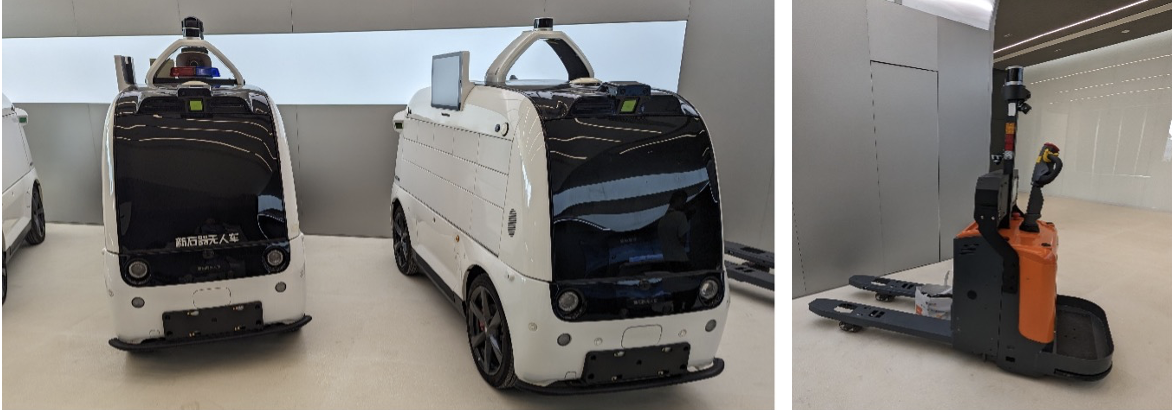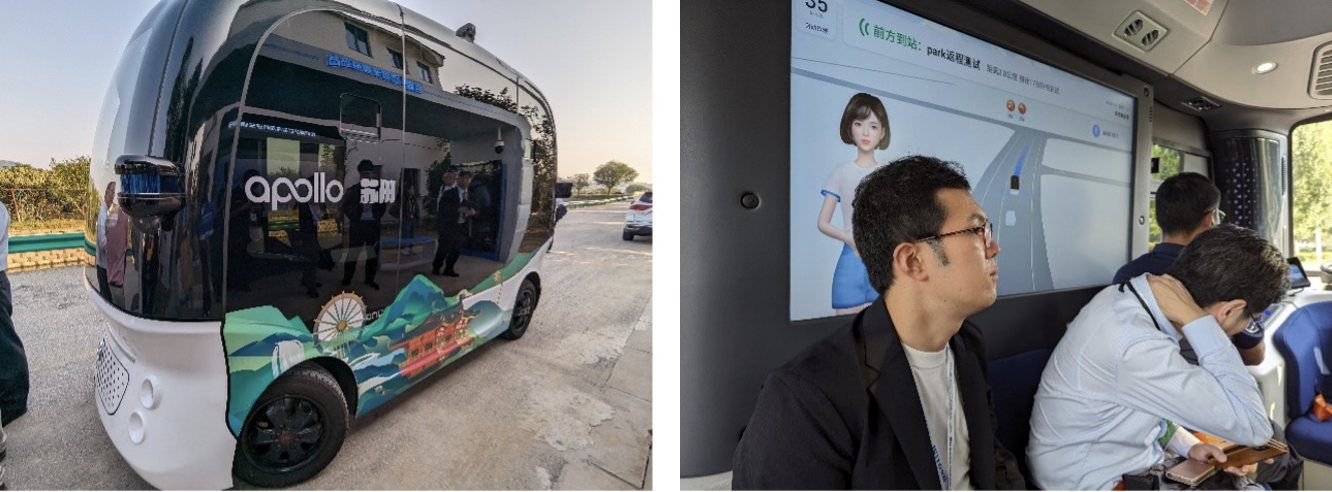When thinking about driverless vehicles, the media often focuses on what is happening in the United States (e.g. Waymo and Cruise) and developments in Asia, particularly China, are sometimes overlooked. John Paddington from ERTICO visited China in October 2023 as part of the ITS World Congress in Suzhou and got to see what is happening there first-hand.
Suzhou is about 120km west of Shanghai and is a historic city with a focus on tourism. One attraction is Xishan Island, which is the largest island in Lake Tai. The 80km2 island has been designated a test area for connected and driverless vehicles. On our visit in October 2023, Baidu had just opened a campus on the island. Baidu is a Chinese technology company, providing a search engine and web services. They also have developed driverless vehicle technology, which they call Apollo. Apollo has been made open source and other companies have developed their own technologies based on Apollo.
Inside the Baidu campus, we were shown a range of vehicles based on Apollo including a car, a vending machine vehicle, a security patrol vehicle and a forklift. There was also a control room which showed the status of the traffic lights on the island, CCTV footage and information about the different vehicles operating on the island. The control centre monitors 100km of road and 93 signal-controlled junctions. Each junction is equipped with communications technology to provide information to vehicles on their traffic signal status.

Photo of the outside of the vehicle and the inside of the vehicle showing the personal assistant
Outside the campus, we were invited to try one of the 100 driverless vehicles on the island. We decided to try an Apolong shuttle. The shuttle sits eight people. There is no steering wheel or pedals. In Suzhou, local regulations means that there must be a safety steward on-board, but in other parts of China, they can operate without a steward. Speed is capped at 33km/h. The shuttle is built with autonomous functions in the factory instead of being retro-fitted.
The shuttle will be operating on a 40 minute route on the island, three to four times a day. Customers can hail the shuttle with an app or from a bus stop. There is no payment system on-board. Although there is space in the vehicle, it would be difficult to access with a wheelchair as there is no ramp installed.
The shuttle has a simulated personal assistant on a big screen (but we did not try this). There was information provided in Mandarin. The display shows the vehicle’s path on the road and other vehicles it detects as it travels.
For the shuttle, high-definition maps are not required but they help. The shuttle can navigate junctions and read traffic signals using machine vision technology. It can also use communications from the traffic signals and it does so about 10% of the time. Communications technology is used to provide alerts of vehicles driving the wrong way (which happened during our visit).
Our visit was a short one so we did not drive the full route but a part of it. The safety steward drove the vehicle to the route and at the end. However, between these points, it ran autonomously. The vehicle was smooth and behaved in a controlled manner with other vehicles and pedestrians. With the safety steward on-board, the vehicle felt safe, particularly as it was travelling at a relatively low speed. There was only one time where the vehicle needed to break hard and we were asked to wear seatbelts for that reason. It was certainly the smoothest journey I had in a driverless shuttle and I have been in most European manufactured shuttles.

Photo of the outside of the vehicle and the inside of the vehicle showing the personal assistant
Author: John Paddington (ERTICO)
Cover Image by fanjianhua on Freepik


